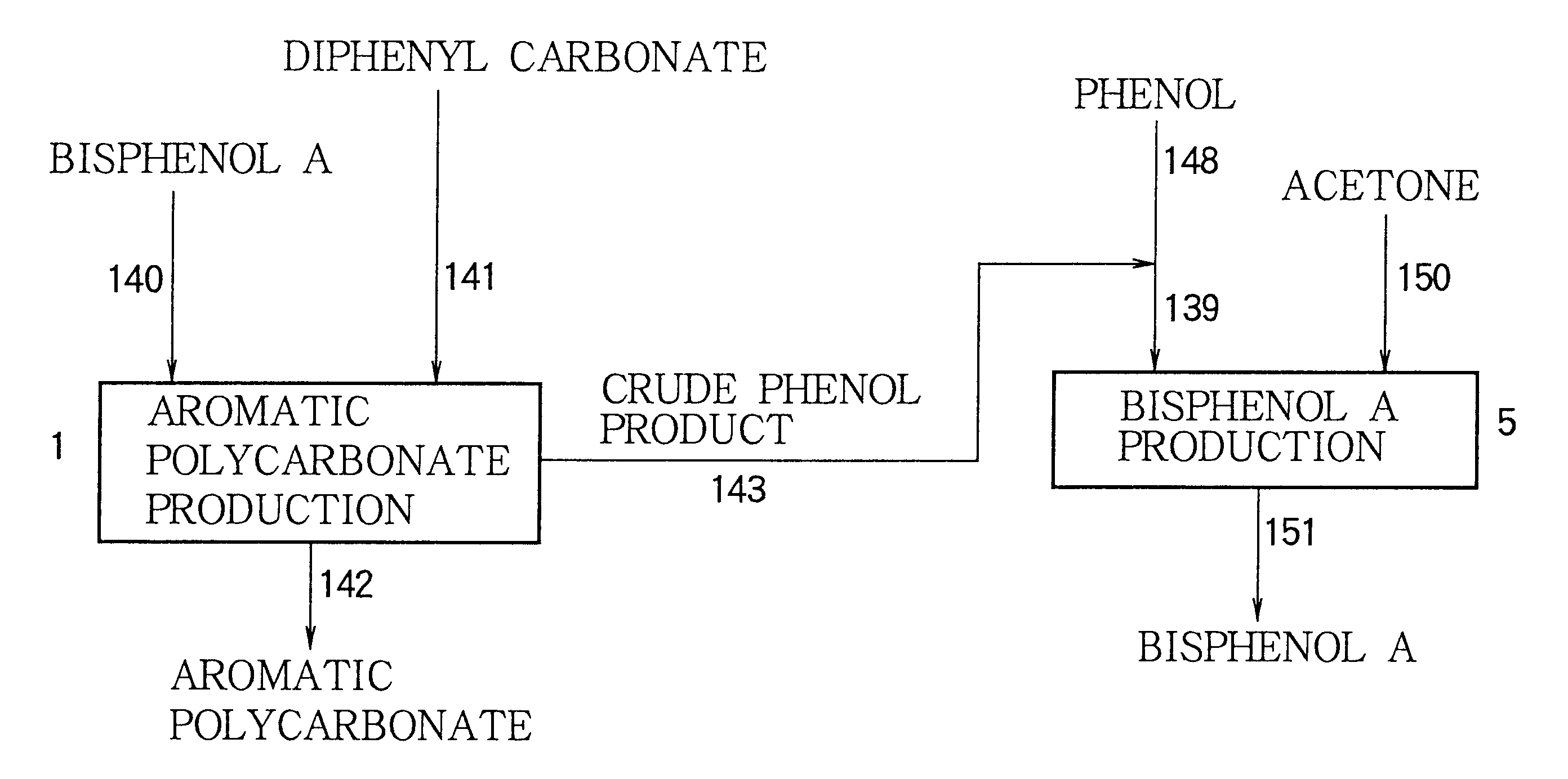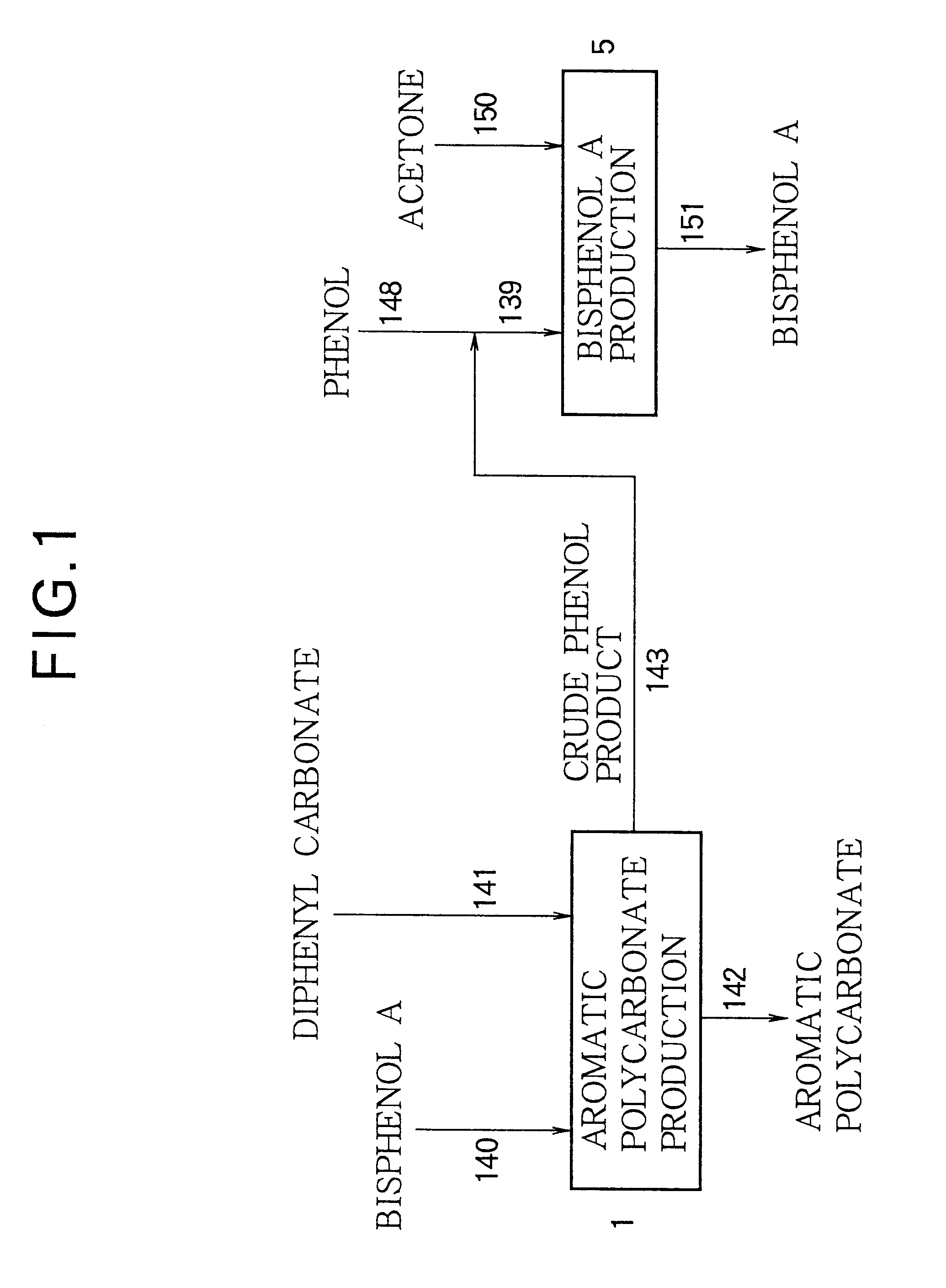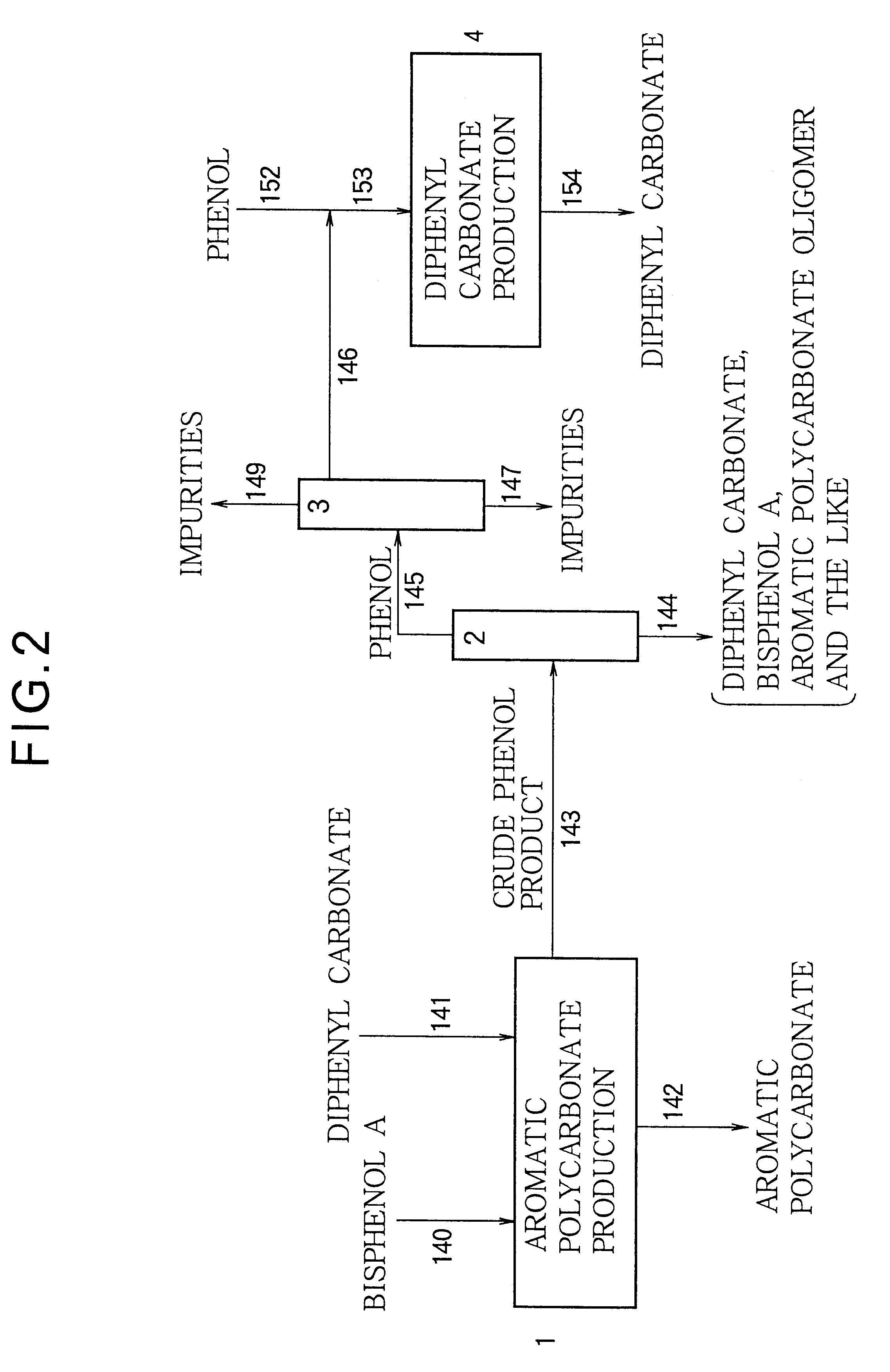Method for producing an aromatic polycarbonate
a polycarbonate and aromatic technology, applied in the field of aromatic polycarbonate production, can solve the problems of difficult to obtain high-quality polycarbonate, adversely affect the properties of produced polymers, and inability to achieve high-quality polycarbona
- Summary
- Abstract
- Description
- Claims
- Application Information
AI Technical Summary
Problems solved by technology
Method used
Image
Examples
example 2
An aromatic polycarbonate was produced in accordance with a system as shown in FIG. 6. Substantially the same operation as in Example 1 was repeated, except that hydrolysis chamber 136 was provided, wherein phenol condenser 13 was connected to hydrolysis chamber 136 through conduit 41, liquid seal-type vacuum pump 15 was connected to hydrolysis chamber 136 through conduit 45, and hydrolysis chamber 136 was connected to crude phenol product accumulation tank 18 through conduit 137.
The crude phenol product recovered from the polymerization system of the aromatic polycarbonate production stage was fed to hydrolysis chamber 136 through conduits 41 and 45. Water was fed to hydrolysis chamber 136 through conduit 138 so that the amount of water became 1% by weight, based on the weight of the crude phenol product. Hydrolysis chamber 136 was operated under conditions wherein the temperature was 150.degree. C. and the residence time was about 2 hours. The crude phenol product treated in hydro...
example 3
An aromatic polycarbonate was produced in accordance with a system as shown in FIG. 7. Substantially the same operation as in Example 1 was repeated, except that crude phenol product withdrawn from second stage agitation type polymerizer vessel 11 was fed to diphenyl carbonate recovering column 155 so that diphenyl carbonate, bisphenol A and an aromatic polycarbonate oligomer were separated from phenol and recycled to the polymerization step.
The liquid obtained from the bottom of diphenyl carbonate recovering column 155, which contains diphenyl carbonate, bisphenol A and an aromatic polycarbonate oligomer as major components, was recycled to second stage agitation type polymerizer vessel 11 through conduit 156. An evaporated gas distilled from the top of diphenyl carbonate recovering column 155 was fed to condenser 161 and condensed so as to generate a gaseous phase and a liquid phase. The liquid phase was led to crude phenol product accumulation tank 18 through conduits 159 and 45....
PUM
| Property | Measurement | Unit |
|---|---|---|
| temperature | aaaaa | aaaaa |
| temperature | aaaaa | aaaaa |
| temperature | aaaaa | aaaaa |
Abstract
Description
Claims
Application Information
 Login to View More
Login to View More - R&D
- Intellectual Property
- Life Sciences
- Materials
- Tech Scout
- Unparalleled Data Quality
- Higher Quality Content
- 60% Fewer Hallucinations
Browse by: Latest US Patents, China's latest patents, Technical Efficacy Thesaurus, Application Domain, Technology Topic, Popular Technical Reports.
© 2025 PatSnap. All rights reserved.Legal|Privacy policy|Modern Slavery Act Transparency Statement|Sitemap|About US| Contact US: help@patsnap.com



